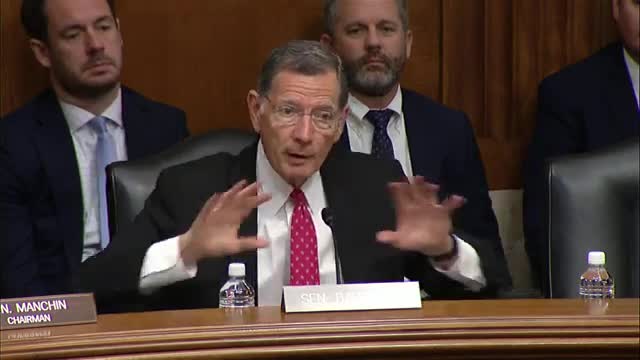Grizzly bear recovery sparks debate over delisting plans
July 10, 2024 | Energy and Natural Resources: Senate Committee, Standing Committees - House & Senate, Congressional Hearings Compilation

This article was created by AI summarizing key points discussed. AI makes mistakes, so for full details and context, please refer to the video of the full meeting. Please report any errors so we can fix them. Report an error »

During a recent government meeting, discussions centered on the status of grizzly bears and land management issues in Wyoming, highlighting significant environmental and economic concerns.
The meeting began with a focus on the grizzly bear population, which remains listed as threatened under the Endangered Species Act (ESA). Officials noted that the population in the Greater Yellowstone Ecosystem has exceeded recovery criteria, indicating a successful recovery effort. Wyoming has formally petitioned for the delisting of the grizzly bear, seeking to classify it as a distinct population segment. The Assistant Secretary acknowledged the importance of following legal protocols in the delisting process, emphasizing the need for careful consideration to avoid potential legal challenges.
The conversation then shifted to the Bureau of Land Management's (BLM) draft resource management plan for the Rock Springs field office, which could restrict access to over 3.5 million acres of federal land. This plan has faced strong opposition from Wyoming's governor, congressional delegation, and local officials, who argue it could severely impact livelihoods in the region. The Assistant Secretary expressed awareness of the concerns and indicated a willingness to engage with Wyoming stakeholders if confirmed.
Lastly, the meeting addressed coal leasing in the Powder River Basin, a significant area for coal production in the U.S. The BLM's recent steps to prohibit new coal leasing have raised questions about future energy needs. The Assistant Secretary acknowledged the ongoing debate regarding coal's role in the energy mix and committed to gaining a deeper understanding of the issues surrounding existing leases and future demand if confirmed.
Overall, the meeting underscored the complexities of wildlife management and land use policies, reflecting the balancing act between environmental conservation and economic interests in Wyoming.
The meeting began with a focus on the grizzly bear population, which remains listed as threatened under the Endangered Species Act (ESA). Officials noted that the population in the Greater Yellowstone Ecosystem has exceeded recovery criteria, indicating a successful recovery effort. Wyoming has formally petitioned for the delisting of the grizzly bear, seeking to classify it as a distinct population segment. The Assistant Secretary acknowledged the importance of following legal protocols in the delisting process, emphasizing the need for careful consideration to avoid potential legal challenges.
The conversation then shifted to the Bureau of Land Management's (BLM) draft resource management plan for the Rock Springs field office, which could restrict access to over 3.5 million acres of federal land. This plan has faced strong opposition from Wyoming's governor, congressional delegation, and local officials, who argue it could severely impact livelihoods in the region. The Assistant Secretary expressed awareness of the concerns and indicated a willingness to engage with Wyoming stakeholders if confirmed.
Lastly, the meeting addressed coal leasing in the Powder River Basin, a significant area for coal production in the U.S. The BLM's recent steps to prohibit new coal leasing have raised questions about future energy needs. The Assistant Secretary acknowledged the ongoing debate regarding coal's role in the energy mix and committed to gaining a deeper understanding of the issues surrounding existing leases and future demand if confirmed.
Overall, the meeting underscored the complexities of wildlife management and land use policies, reflecting the balancing act between environmental conservation and economic interests in Wyoming.
View full meeting
This article is based on a recent meeting—watch the full video and explore the complete transcript for deeper insights into the discussion.
View full meeting